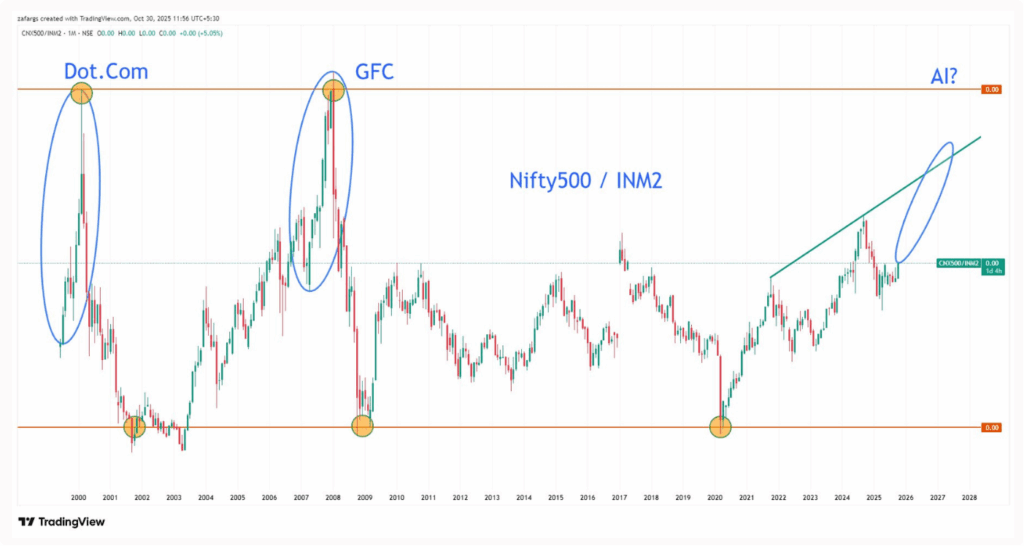How Market and Money Supply Move Together
The relationship between the stock market and money supply tells us a lot about economic trends. When the market rises faster than the money being added to the system, it shows strong investor confidence and rapid growth. On the other hand, when money supply increases quickly but the market stays flat or falls, it means liquidity is high but confidence or demand is low.

Lessons from Past Market Phases
During the dot-com boom, stock markets grew much faster than money supply. Later, when the global recession hit, money supply expanded sharply, and markets fell (see the image above). This caused the ratio between market performance and money supply to collapse. The same pattern was seen again during the global financial crisis of 2008. Markets dropped while money supply kept expanding, showing stress in the system.
The Post-2009 and Post-Covid Market Behavior
After 2009, markets remained mostly stable with sideways movement. However, after the Covid-19 period, Indian markets again started rising very quickly. Even though stock prices are now much higher than before, the money supply has also increased sharply. Because of this, the overall ratio between market growth and money supply hasn’t yet reached previous peaks.
What This Means for the Current Market
This situation shows that even though markets are high, much of it is supported by an expanding money supply. If money supply doesn’t grow as fast in the coming years, it might be difficult for the market to rise sharply again. The system now needs more liquidity to keep supporting high valuations. This makes it less likely for markets to jump too quickly without more monetary support.
Possible Scenarios Ahead
If the ratio between markets and money supply moves higher again, it could signal an overheated phase similar to the past. That kind of phase is often followed by a slowdown or even a mild recession. However, since money supply rarely contracts and usually stays stable or increases, a large fall in markets seems less likely unless there is some major external shock. Overall, markets appear reasonably balanced for now, standing close to their long-term average levels.










